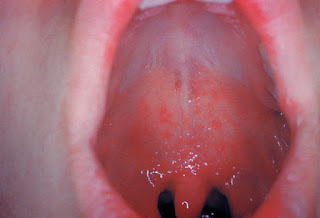Practicing Portion Control: is an Important Aspect of Weight Loss
Some details on how to effectively practice portion control:
- Use smaller plates: Research has shown that using smaller plates can help reduce portion sizes. When you use a smaller plate, it creates an optical illusion that makes the portion of food appear larger, which can help you feel satisfied with a smaller amount of food.
- Be mindful of serving sizes: Pay attention to recommended serving sizes on food labels and try to stick to them. Many packaged foods have serving size information listed on the nutrition label, which can help you gauge how much you should be eating. Avoid eating straight from a large bag or container, as it can be easy to lose track of portion sizes.
- Listen to your hunger cues: Pay attention to your body's hunger cues and eat when you are truly hungry, rather than eating out of boredom, stress, or other emotional triggers. Eating mindfully and being present during meals can help you tune in to your body's hunger and fullness signals, allowing you to eat according to your body's needs.
- Avoid distractions while eating: Eating while distracted, such as watching TV, working on your computer, or scrolling through your phone, can lead to mindless eating and overeating. Instead, make an effort to eat without distractions, focusing on the taste, texture, and enjoyment of your food. This can help you be more aware of portion sizes and prevent overeating.
- Plan and prep meals in advance: Planning and prepping your meals in advance can help you control portion sizes. When you prepare your meals at home, you have control over the ingredients and portion sizes. Use smaller plates or containers for your meals and avoid going for second helpings unless you are genuinely hungry.
- Slow down and savor your meals: Eating slowly and mindfully can help you feel more satisfied with smaller portions. Take the time to chew your food thoroughly, savor the flavors, and enjoy the experience of eating. Eating too quickly can lead to overeating, as it takes time for your body to register fullness.
- Be aware of high-calorie foods: Some foods are naturally higher in calories than others, so it's important to be aware of these and practice portion control accordingly. Foods such as nuts, seeds, oils, cheese, and desserts can be high in calories and should be consumed in moderation.
- Seek support from a registered dietitian: If you're struggling with portion control or have specific dietary needs, consider seeking support from a registered dietitian. A registered dietitian can provide personalized guidance on portion sizes, meal planning, and overall nutrition to help you achieve your weight loss goals in a healthy and sustainable way.
- Use the "half-plate" rule: Aim to fill half of your plate with non-starchy vegetables, such as leafy greens, broccoli, carrots, and peppers. This can help you increase the volume of your meals without adding many calories, leading to a feeling of fullness and satisfaction.
- Limit liquid calories: Beverages can contribute a significant number of calories to your diet, especially sugary drinks like soda, fruit juices, and energy drinks. Be mindful of the calories in your beverages and opt for water, unsweetened tea, or black coffee instead.
- Avoid eating out of large packages: Eating directly out of a large bag or container can make it difficult to keep track of how much you're eating. Instead, portion out a reasonable serving size onto a plate or bowl to avoid mindlessly consuming excessive amounts.
- Be cautious with condiments and dressings: Condiments and dressings can add up quickly in terms of calories and portion sizes are often overlooked. Use them sparingly or opt for lower-calorie options like mustard, vinegar, or salsa instead of high-fat dressings or sauces.
- Pay attention to hunger and fullness cues: Listen to your body's hunger and fullness cues and stop eating when you feel comfortably full, even if there's still food left on your plate. Avoid the temptation to "clean your plate" and be in tune with your body's signals.
- Don't eat straight from the package: When snacking on foods like chips, crackers, or cookies, avoid eating directly from the package. Instead, portion out a reasonable serving size onto a plate or bowl to help you keep track of how much you're consuming.
- Be mindful of emotional eating: Emotional eating, or eating in response to stress, boredom, or other emotions, can lead to overeating and poor portion control. Be aware of your emotional triggers for eating and find alternative ways to cope with emotions, such as talking to a friend, going for a walk, or practicing relaxation techniques.
In conclusion, practicing portion control is an effective
strategy for weight loss. Using smaller plates, being mindful of serving sizes,
listening to your hunger cues, avoiding distractions while eating, planning and
prepping meals in advance, slowing down and savoring your meals, being aware of
high-calorie foods, and seeking support from a registered dietitian can all
help you practice portion control and create a healthy relationship with food
for successful weight loss. Remember, weight loss is a gradual process, and
it's important to make sustainable changes to your eating habits for long-term
success. Always consult with a healthcare professional or registered dietitian
before making significant changes to your diet or lifestyle.



Comments
Post a Comment